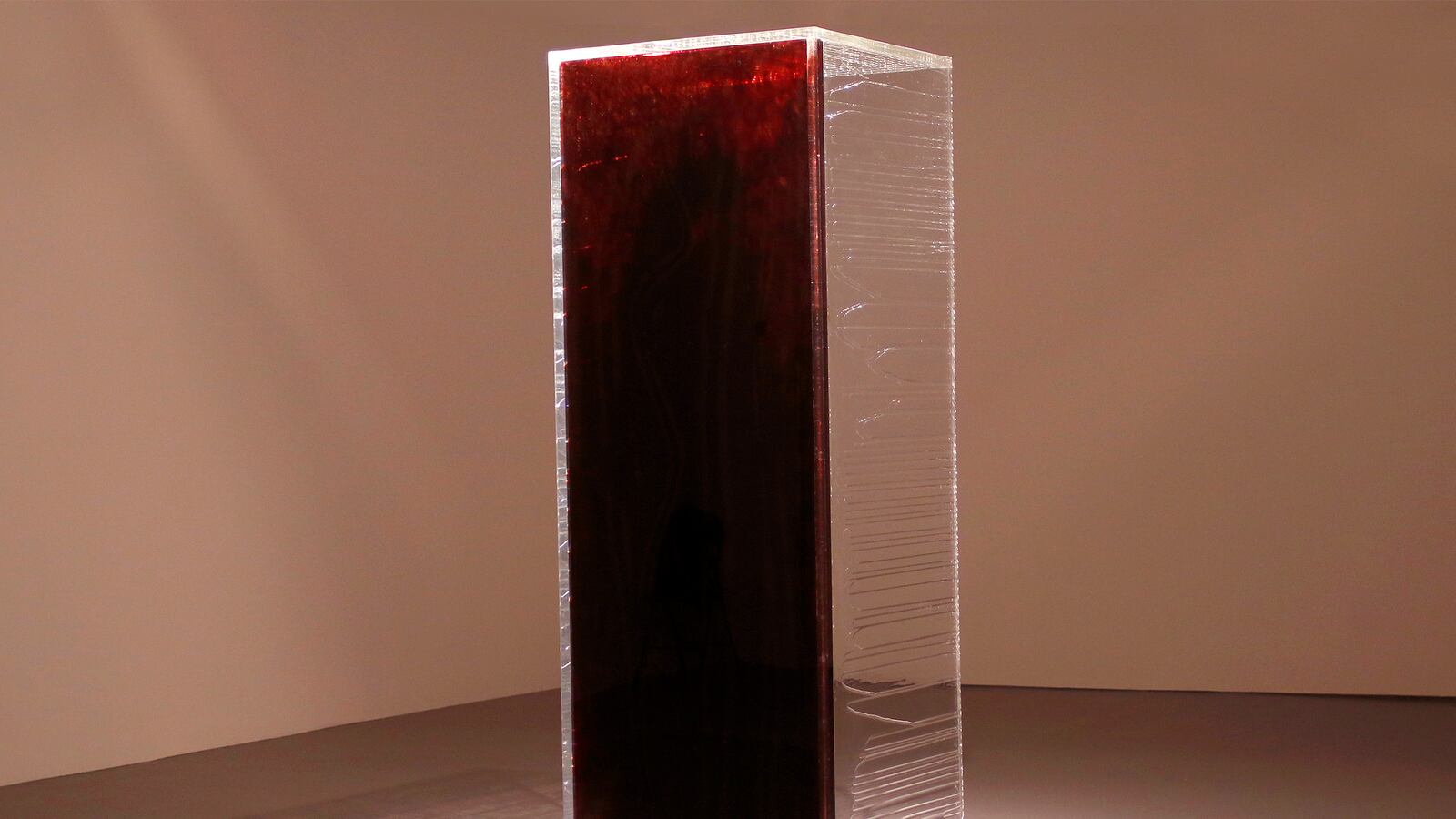For decades, gay men have been forbidden from saving the lives of millions.
Since 1983, a nationwide ban has prevented all men who have ever had sex with other men from donating their blood. Even if the experience was a one-time thing.
But a change to this archaic practice could be on the horizon as the conversation around the full and equal rights of the LGBT community continues. The FDA is proposing a modification to the ban: stay sex free for one year, and then you can save some lives.
One could argue that it’s almost no revision at all. Who does that make eligible, a gay priest?
Not even.
John Moody, an 88-year-old reverend at Trinity Church in downtown Manhattan, is one of nine people taking a stance against the homophobic restrictions as part of a new work of art by Jordan Eagles. Together, they hope to challenge the FDA through his latest piece, Blood Mirror.
Standing over 7 feet tall, the massive Plexiglas sculpture glows a deep and vibrant red. The boxy monument is large enough to step inside and contains the exact same matter that gives us life—human blood. As you stand before it, the bold color illuminates your reflection in the polished casing.
For over two years, Eagles conceived the work with the help of some 30 collaborators—friends, musicians, videographer Leo Herrera, and those willing to donate, which included religious leaders, military personnel, activist and the trans community. Each person donated up to a pint of blood, the standard amount for a regular donation.
It’s the first time Eagles has worked with human blood. For the past 17 years, he has crafted his works of art out of animal blood obtained from slaughterhouses to tell a story of regeneration—“It’s about taking something not living and presenting life again,” he said.
The massive works can scale up to 32 feet in size as Eagles paints, splatters, and even burns the viscous liquid in order to preserve it. The outcomes oscillate between a magnificent explosion of constellations and a magnified view of our very basic elements. For Eagles, “philosophical questions of life and death” can be found throughout his work.
But for this specific piece, Eagles had many “broad human archetypes” that he wanted to meet, he said. “And everyone has a very unique story.”
Father Moody, who has been in a relationship with his partner for 37 years, can’t even donate. Lifting the ban could save up to 1 million lives per year.
“This particular subject has always been in the back of my head simply because I was turned away from giving blood,” Eagles told The Daily Beast. “So my first question was really figuring out if it could help the conversation. Then, if there was a way to do it tastefully and thoughtfully.”
Ty Spicha is a twin. Because he is gay, he would not even be able donate blood to save his identical brother’s life, if it were needed. Similarly, Blue Bayer, who has partners both male and female, could never do the same to save his two children as long as the restriction is still in place. This applies even if a rare blood type—or emergency situation—makes them the best possible option.
Even Captain Anthony Woods, who safely led two groups of soldiers to and from Iraq, is unable to donate. In the post-Don’t Ask, Don’t Tell era, Woods could risk his life in another country, but cannot save a life back home.
He graduated from West Point and Harvard University—he was one of three graduates chosen to deliver a prestigious commencement speech at the latter—became a White House Fellow in 2011, ran for Congress in 2012, and has been legally married to his partner for three years.
“We talk about American heroes and men putting their life on the line,” Eagles said. “And here’s this guy who is what many parents want their children to become and he can’t give blood. People like him are what inspired me through this project.”
Eagles also highlights the struggles that the transgendered community faces when choosing to donate blood. “We are in a time where gender identity is something that has to be accepted,” he said. “And as long as the screening process involves gender its flawed and eliminating people.”
Loren Rice, who, identifies as a male, has been legally married to his partner for six years. He’s not had sex with another gay man while identifying as male, nor when he was labeled a female. But since his partner is also a transgender who identifies as a male, Rice is forbidden from donating when “based on what the FDA is actually looking for through the screening policies they could give blood,” according to Eagles.
Other donors include Dr. Lawrence Mass, co-founder of Gay Men’s Health Crisis, Kelsey Louie, the GMHC’s current CEO, Dr. Howard Grossman, the former director of the Academy of HIV Science, and Oliver Anene, an LGBT activist who took political asylum in the U.S. while working on HIV prevention in Africa.
“We are lucky we live in America where we have access to health care and HIV is not what it was in 1983,” Eagles said. “But in Africa, they are still living like its 1983. So let’s get it right in America,” Eagles said, “and hope that the rest of the world can get it right, too.”
Blood Mirror will be on display at the American University Museum at the Katzen Arts Center in Washington, D.C., this fall.





